Listen via YouTube video if desired
Transcription (was completed by automated process. Please ignore any speech-to-text errors)
Hello, everyone. My name is Penny. I’m so glad you joined us today and welcome to this next session of Get Sellers Calling You with Beatty Carmichael. Beatty is the CEO of Master Grabber, the creator of Agent Dominator and one of the top marketing experts in the real estate field. Beatty, I am super excited about this call with you today. What do you have for our listeners?
[00:00:29] Well, I’ve got a really exciting call for today, and that is it may sound kind of boring, but when you really understand the impact, it’s really exciting and is how to do marketing right.
[00:00:41] Because, you know, in real estate, I love what Gary Keller says in all of his books — millionaire real estate agent, Shift and others. He says the most important thing in real estate is lead generation. And then he says the second most. Would you like guess what? The second most important thing is in real estate. If the first generation was the second most important thing.
[00:01:09] Has to be. If I were to guess something to obtain buyers. Almost, yes.
[00:01:16] So it’s tied to that second most important thing in real estate is lead generation. He says the third most important thing. Would you like to guess the third most important thing in real estate is.
[00:01:28] Let me guess.
[00:01:29] Lead generate lead generation. Right. In commercial real estate. Location, location. Location is very real estate business. Lead generation is everything. So we’re going to talk about today is how do you generate leads not on a tactical process, but more a strategic process.
[00:01:52] Does that make sense? Yeah, sure.
[00:01:55] Okay, so let me give you a background on this. I was speaking just a couple weeks ago with a real estate agent named Mike. He’s not the typical real estate agent. He also has his investment license and his primary business is a financial advisor. So he has a block of clients that he manages their assets on. He makes a lot of money from that, but he also works in the real estate world and helps buy and sell real estate because part of his financial advising is to purchase investment properties in real estate. Do you see the connection? Yeah, sure. Okay, so he had the perfect fit. He had this brilliant idea. And I want to share this idea because I know there is some real estate agents out there who may not be a series six. I think it is a financial adviser, but they are friends who are that they can partner with because this is a beautiful partnering opportunity. We’re talking about lead generation. You typically think out of the box if you do what every real estate agent does to generate leads, you’re going to be like every real estate agent, which is working 60, 70 hours a week, scrapping for every deal you get. And when a shift in the marketplace happens, like what’s happened recently with Cobian 19 and the corona virus pandemic stuff, your business falls apart because you’re doing what everyone else does. By the way, I’ve got I’ve got to make this one comment. We have a number of clients whose business has not faltered at all during this period of time. We have other clients whose business has fallen apart. And you know the difference between the two.
[00:03:50] Personal connection with the agent. I was going to get personal connection with the agent and their client.
[00:03:58] A little bit deeper than that. That is a tactical part.
[00:04:01] But strategically, those whose businesses have not faltered, they’ve built their business on right principles that always drive in business. Those whose businesses have faltered are what I’m gonna call hacks at real estate.
[00:04:19] They they just because the market was good, they were able to pick up business, but they really had no process in place, whether it’s those personal contacts and relationships or whether it a strategic marketing plan. They just had nothing. They just kind of threw stuff out and it worked. But now that their shift has happened, or at least a shift in their business has fallen apart. So they had no foundation. They had no foundation. So I digress. But I want to bring it back to the comment of where I was going. And that is, if you do what all other agents do, your business is going to look like all other agents and all other agencies average. And if the definition of averages is the cream of the crop and the crap or the cream, I don’t want to be there. If you want to if you want to have a above average business, you got to think outside of the box and do what others are not. So here’s an idea. Thinking out of the box, it’s this connection between you as a real estate agent and a financial adviser. And so let me share the story that this guy sharing. I thought it was brilliant. And then I want to use this to start to talk about the marketing topics, marketing concepts and understanding to really bring something like this together.
[00:05:39] So Mike has a financial adviser. He’s helped his clients buy investment property. So this is like duplexes, small apartments, retail stores and things of that sort. And so that’s where he’s used his his real estate license. And so he makes a commission off of the transaction. He also makes commission off of managing their assets. But he’s kind of tapped out most of his clients on the things that he would honestly recommend for them. And he’s looking to grow his business. He wants to grow his client base. So he had this brilliant idea. A lot of people have for one case, he wanted to market to people with one case, get them to convert it to a self directed irae. And then he could help advise them on their when they do that, he would become their financial adviser. So now he gets their assets and then he could advise them on investments that they can do to their self directed. Right. And if it’s a real estate investment, he’s going to be in the deal as well. So, first off, just make sure we’re on the same page. Do you know what a self directed IRA is?
[00:06:53] I believe that when you’ve got investments, you get to choose delegates, a percentage of the account or type of account that you put your your money into.
[00:07:06] Very close. So it’s a little bit different, but very close. So if you think about a faurot one K, you get to have some choice in what type of investments you do. Right. But someone else is managing the investment, meaning you buy a mutual fund or you buy or something like that in a self directed IRA. You get to manage the money yourself. So if you want to buy a piece of property or buy stock, you’re actually directing it one hundred percent. And to a degree, you’re managing it. There are some restrictions, but you’re fully in charge of it. Okay. So it gives you much greater leeway on what you do. So brilliant note for professional real estate agent out there. This is a source of great money to then sell investment property. Okay, so this is the connection. So that’s what he wanted to do. And then we started to talk about this and he said, I want to mail 10 or 15 thousand people and start generating more business. And so we started talking about it. I said, well, I’d probably I’d start something smaller than ten or fifteen thousand people. And he said, Why is that? He said, Because you don’t really know what works. And he thought about that for a moment. I said, well, that’s interesting. But I don’t fully understand. He said, all you do is you put together a postcard and you put a call to action on it. I said, well, call the actions or know all that they’re cracked up to be, say most agents. They hear these words. And the purpose of this call is, I want to get away from what you hear and you think, you know, to really helping you understand. Have you heard? Do you know what a call to a CPA or call to action is? Have you heard that term?
[00:09:00] I’ve heard the term, but I honestly probably could not define it properly.
[00:09:05] So let’s define it because it’s important. A CPA, as it’s called, Call to Action, is simply a statement you make to call your prospect to action. Pick up the phone and call me thinking about selling your property. Call me now. That’s a call to action. And what happens is most real estate agents, they pick up these terms, they see they see something. That’s the secret. It’s all about a call to action. And the people that are making money with their marketing because they have a call to action. I don’t need to put a call to action there. And I was telling my ex said, call the actions are worthless unless you do it right. So now I caught him at this point that he’s now ready to learn and understand what he has no clue in.
[00:10:00] Now, remember the comment one of my friends was sharing? I went to a real estate training class that he did years back and he put up a slide for the realtors in the room.
[00:10:11] And it basically said and he was talking about this is kind of how you approach when you’re engaging a property owner to sell their property. The statement was, if you think hiring a professional is expensive, try hiring an amateur. And in marketing, that really applies because my mike was willing to go spend 30, 40, 50 thousand dollars his first year thinking all it was was a call to action and he would make money. So with that, let me get real this in and start talking a little bit about marketing. Does that work with you?
[00:10:49] Yeah, absolutely.
[00:10:52] So the first thing in marketing is you’ve got a test. And the reason why. Can you guess why you want to test?
[00:11:03] You don’t know what works.
[00:11:04] That’s right. That’s right. Not everything works, okay, until you’ve tested it. You don’t know if it works or not.
[00:11:13] And so this is why a lot of times if we take postcards, for example, because this is a common thing, a lot of mail postcards and they don’t work. No e-mail postcards. And what you put on the postcard did not work. Not the postcard postcard system. Delivery method. Oh, I did online advertising. It doesn’t work. No online advertising works. What did you say? Okay, so the first step is you have to understand that marketing is two components. What you say and how you deliver what you say. A postcard. Pay per click and funnel sales funnel into ads that drive into that. All of that is just a delivery. It’s the mechanics. But what you say is the most important, in essence, marketing, is salespeople. You’ve automated the sailing the selling process and you push it out in mass. And just like salespeople, one salesperson is going to get higher results than another salesperson, for one thing. Would you like to guess with that?
[00:12:24] One thing is I’m scared to guess.
[00:12:29] They say things differently. They say things differently. They know what to say and they know how to say it. Does that make sense? Yeah. Okay. Okay. So there’s a lot behind what they say and how they say it. But ultimately it’s what they say and how they say that causes a sale to happen or not.
[00:12:48] And that’s the same thing it is with your marketing. So the reason you want to test is not everything works. So you want to you want to test small. Okay. And then once you know something works, then you can scale it up with the delivery, the delivery.
[00:13:06] I mean, I think about like when you said that, like, I went to buy a car, for instance, and I went to two different car lots and they both told me the same thing as one of them. The way they spoke, the message to me and gave me that information, their delivery was better and more convincing. Well, then I’m going to buy the car from them.
[00:13:26] That’s exactly right. If they’re selling the same car, but you resonate with one person and the other person to finish you with what he says. There you go. It’s what you say and how you say it. Okay. But then there’s something else in there. So it’s not just what you say and how you say it, what it is. But if you go if you dissect that a little bit further, is are you saying it in a positive format or negative format, meaning let’s say if I wanted to focus on home sellers, I could say the same thing in a positive statement or a negative statement. The positive statement, if you’re thinking about selling your home. Here are four things you can do that will get you a lot more money. I can make the same statement in a negative if you’re thinking about selling your home. If you don’t do these four things, you will lose a lot of money.
[00:14:35] They’re really the same things. It’s just a matter of time. Does that make sense?
[00:14:39] Yes. Yes, it does.
[00:14:41] So here’s one reason to test. If I come to you as a homeowner and I say if you’re thinking about selling your home these four secrets. We’ll get you 20 percent, more or less say that your three hundred thousand dollar home as much as 60 thousand dollars more for your home. Or I come to you and say, if you’re thinking about selling your home, Veith, if you fail to do these four things, you will lose as much as 60 thousand dollars on your home. Are you going to respond the same way or do you think one generates a different response than the other?
[00:15:25] I feel like one of those would be more convincing to me.
[00:15:30] Okay, so for you. Which one would be more convincing? Which one would. If that’s all you saw. And right now, we’re just talking about the offer articulated as a headline. Okay. The positive offer or the negative offer? Which one motivates you more than the positive. Hmm. Hmm. Hmm. Interesting survey says when you survey we actually did this test. Okay.
[00:15:56] We tested positive versus you’re going to tell me that I don’t fit in the box. Do I.
[00:16:03] I’m not I haven’t said anything yet. I’m just I’m just laying you up, okay. I’m just letting you off on this question. When we tested this, we tested thousands and thousands of postcards and what we call split a marketing test, which you take we would take a farm and we just randomize half the addresses would get a positive offer. Half the addresses would get a negative offer. And then we did that all across the country. And then we tabulated the results to see which offer positive or negative increased results and which ones decrease.
[00:16:41] Would you like to guess what the offer? Produce more results.
[00:16:49] Based on that, I’m going to go negative.
[00:16:53] You don’t have much confidence in yourself, any positive offer outperformed the negative, just like you said you would find it more positive. Okay. Now, here comes a big question. Okay. So positive Forfar outperforms negative. The question is by how much? What would you guess would be the difference? In other words, how much more likely are you to respond to that positive offer versus if it was a negative offer, just a little bit more or a lot more?
[00:17:28] Yeah, it’s really more like I feel like I would. Yeah.
[00:17:33] And how much would you say would you think that would be for you?
[00:17:38] Percentage wise, I would probably be 90 or more percent more likely to respond.
[00:17:47] Okay, so here’s the thing. Until you test it, you really don’t know which way to go. And this is what I was telling Mike. He wants to spend a lot of money going after all of these strangers to try to get them to come to him. Give him all of their money and then invest in property. Okay. It makes a big impact if you spend forty thousand dollars in a year, whether you get if you’ve got one cell versus 400 cells, that would be a big impact difference. Okay, so what we found is the test and the homeowner market is eight hundred percent difference. In other words, we got eight times more people responding to the positive offer than the negative offer. But think about this. That’s going to a homeowner. Now, if we’re doing this for Mike and sharing this with Mike, I said someone with an investment.
[00:18:47] Are they more interested in gaining money or or more interested in not losing money? We don’t know. I know in business. More businesses are motivated by risk mitigation, which is not losing as opposed to opportunity to gain. So in a business environment, the negative offer would likely outperform positive offer. But in the homeowner market, the positive outperforms. So these are the things you have to test. Maybe it’s another thing to test is the offer. Okay, so homeowners.
[00:19:25] Is the offer these for seekers will get you more money? Or is the offer I can sell your home immediately. Or is the offer something different. Okay, so you test these different things, you start to figure out what it is that your market is going to be most likely to respond to. And then when you know what that is and you test it and you start to get results, then at that point you start to scale it up.
[00:19:51] So that’s why you test. That makes sense. Yes, it does.
[00:19:55] And without testing, you really just don’t. You’re shooting in the dark. If you don’t test, you’re an amateur.
[00:20:03] And that’s a lot more expensive than hiring a professional. So then the second thing you want to do is, is how do you test? So it’s easy to say let’s test it. Next question is how? And this is what Mike was saying. How do you do it? And so what I was telling Mike is I said, look, you’ve got the budget to do 15000 homes. Then the best thing to do, because 15000 prospects for him said the best thing to do is let’s maybe do a marketing test of 2000 people where we can do a thousand with one and a thousand with another and test two things. And he said, well, why do you want to test two things? I said, because if you test more than two, you don’t know what’s causing the difference. So think about this. If I if I test a if I test a positive offer. For secrets to make more money and I test a negative offer. The five biggest mistakes most people make when selling their home. I get different results. I don’t know if it’s the offer for secrets or mistakes or if it’s the positive, make more money or the negative. Lose everything you have in your house and end up destitute so you can’t test multiple variables at one time. You have to do a test. It has to be only one difference between the two so that if there is a change in results, you know, there is only one change in what you did and therefore you can tell which one produces more. Does that make sense or did I can you know, that makes perfect sense.
[00:21:53] I mean, the more information that you’re putting out there in order to test something, the harder it’s going to be for you to come to conclusion. Like you said, which one was the actual one that worked or didn’t work?
[00:22:06] And so in the whole world of testing, you want to eliminate every opportunity for. An unknown variable to influence it. Let me give you a simple example of how this can be done wrong. So you have someone doing, let’s say, geographic farming, for example. And they want to test two offers. So they test one offer to one farm and they test another offer to a different farm. And they get one offer, outperforms the other offer. Is that a valid test? Yes. Wait. Okay. All right. Different types of people live in each of those farms. Yes. Could it be that one type of person has an average income of 100000? The other type of farm has an average income of fifty thousand? Yes. Do you think that could make a difference in how they respond? Absolutely. Do you think if one neighborhood is black and the other neighborhood hood is white? Do you think that could make a difference? Yes. So what happens if you test one farm against another? By changing your offers, then you’ve mis unknowingly you’ve included another variable that you didn’t know was there. And that is one farm is a different type of person than the other farm, potentially. So it could really skew your results. So if you wanted to. Good test. You want to either do one farm and randomize the addresses and then 10 one offer to one set of addresses, the other offer to the other set.
[00:23:58] Or if you’re going to do both farms you randomize each farm into individually and then you send it out. In other words, you have to eliminate every opportunity for another variable to accidently crop up. Then people ask, well, how do you how do you randomize? Really easy. This is the easiest part I found. The easiest way to randomize is if you’ve got first name, last name and address, sort by first name.
[00:24:33] Totally randomise is everything. You take the first half of first names and you send them off for one in the second half of the first things and send them off or two. And now you have no variance in what is going on. So the first step is, is in testing, the best way to test is going to be the split test. We call it marketing A split a B test. Everything is totally the same except offer A versus offer B..
[00:25:05] This also means you have to have a simple way to track it. An easy way to track. Which one do you get the most phone calls from? Okay, you get that person’s name and address and you look it up in your list and you figure out which offer they came from. Okay.
[00:25:22] More sophisticated the way we track because we have more technology, as you know, we have a what we call stealth tracking technology. So we send into a Web site. And instantly when they go to the Web site, we’re able to pinpoint the address that they responded to. So this is if we’re doing a postcard that matches it back, if you’re doing online advertising to do split marketing like PPC, paper, click type advertising, you can set all of those to do split tasks. You just have to have a little bit more difficult than just running an ad. You have to do a few things more. But they will actually alternate the ads for you, send them to a Web site. And there’s code that you put on the Web site that goes back into, let’s say, Google AdWords, and I’ll let you know which offer is working better. So lots of ways to do it. There’s another real simple way to testing. It’s not as good as the split marketing test, but it’s a lot less complicated to do that simply. This is why most people do it. They put a postcard or an ad together and they run it.
[00:26:39] And if it gives good results and they just keep running, it doesn’t get good results. They stop and say, well, that didn’t work. So you can just do what I’ll call it either worked or it didn’t type of work. But if you can test it, test two different things, you’ll find that one thing will always outperform.
[00:26:56] The other thing I remember, this is real interesting. So one of the things that is important and testing is the offer. In fact, this is the most important thing. And they offer to see if I can clarify this for you and simplify it. It’s the. What do you say that gets them to respond? Maybe this is an easy way to understand. Ghuneim Gary Helbert taught this to me not personally, but vicariously through his marketing training. And he was talking about the offer. Any expressed it this way. Imagine for a moment that your very best friend or your daughter, depending on how old you are and your very best friend is a woman and she’s pregnant and she’s really close to giving birth.
[00:27:57] I mean, it’s like any day now you’re out shopping someplace. And this stranger comes up here in Birmingham.
[00:28:11] You have the car, basically, you have the Americans and you have the car and the Mexicans. But basically the Spanish speaking Latinos, they come from south of the border. And there’s a big group of Spanish speaking folks here.
[00:28:30] So this stranger who doesn’t speak any English, only speaks Spanish. He comes up to you and he points to his watch and he points way, a way somewhere else. And he puts this great big makes his ball over his tummy like a great big basketball. And he’s pointing over in the direction of the hospital. What immediately comes to mind is.
[00:28:55] His wife is about to have her Beatty. His wife.
[00:29:00] Or maybe your best friend. My best friend. Yes. Right. Okay. Okay. So without saying any words, he’s able to express an offer. Instantly. You know what it means. Instantly you have interest because it’s important to you. Does that make sense? Okay, so that’s the offer. Now, assume that the same person then says Penny, your best friend Suzy is in labor right now. The hospital get there immediately. Do you act faster if he’s able to articulate it better? Yes. But it’s the same offer said a different way. Okay, so you had the offer and you had the headline. The offer is what you’re communicating. The headline is how you communicate it. So most important part is the offer. If we go back to Mike. With his prospects that he wants to target is the offer. I can get you a better return on your Faurot one K money. Or is the offer? How to protect your investment and your four one K. With a rock solid recession proof. Financial investment income stream. Do you see how those may be two different offers total? Because that was his whole approach. Hey, right now stock market is crazy. It’s going nuts going down. People are losing money in there for one case. How do you protect that? How do you protect it in an investment that is recession proof? His ideas, you invest in multi-family housing. People are always going to pay their rent. And if they don’t, they move out and someone’s going to take their spot. So this is the that’s the offer. And then the question is, how do you phrase it? So another guy was talking about how to write a headline.
[00:31:05] And this is something that is important in your messaging. So in terms of what do you test, you’re going to test the offer. So let’s say if we go back to the fourth secrets, for example, for secrets, these four, if you’re thinking about selling these secrets, we’ll get you up to 18 percent more money on the sale of your home. So the offers for secrets that get you more money.
[00:31:33] The headline, how you write the OP. Here’s another way to write it. If you’re planning to sell your home, these four secrets can get you as much as twenty eight thousand dollars more on your home. Or another way to write it. If you’re planning to sell your home and normally sell for three hundred thousand dollars, these four secrets will get you as much as three hundred and thirty two thousand dollars for it. It’s all the same offer expressed differently. Do you see how that works?
[00:32:04] I sure do.
[00:32:05] What do you want to do? You want to take that offer that you’ve tested. So when you’re testing one offer against another, doesn’t really matter how you write, you want to write it as well as you can. But generally, when you write out the copy for the offer. What I do is I’ll write fifteen or 20 different ways of saying that same message. And then I’m going to analyze those and say which one articulates it better? It’s just like that guy who comes up to you who can’t speak English.
[00:32:36] So he just kind of points that things and show you a sense of urgency vs. being able to better articulate it. So here’s an idea. I want to just show you how this applies. Back in the 80s when we were having a major recession. Gold and silver were going through the roof financially. And so there was a company called Numismatic Company. They sell gold and silver as investment.
[00:33:06] And they had relationships with some financial institutions that would actually loan investors up to two thirds of the purchase of gold and silver as an investment.
[00:33:18] So they were running an ad in The Wall Street Journal and the ad said two thirds buying financing on gold and silver. And then they were making money, but then they hired a professional and that professional started testing different headlines because in your marketing, your headline is the most important part of your entire marketing piece, because if it doesn’t grab their attention, they’re not going to go any further.
[00:33:48] Does that make sense? Yes. And also, by the way, in lead generation, because we started the most important thing in real estate is lead generation. Right. Lead generation is almost entirely headline based. The call to action only is effective once you grab their attention. Created interest and create an environment that they now want to respond. Then you give them a call to action. And that’s where Mike was missing it. He’d heard this term call to action. Well, that’s all it is. Those people making money have a call to action. Those people not making money. Don’t need a call to action. No, there’s a lot that goes before it. The call to action is the final stage. So this company hired a professional marketer. He tested different headlines and a headline that outperformed everything else, said this. Okay, first, let me give you the headline again. Two thirds financing on gold and silver.
[00:34:48] The next headline that outperformed it by 20 times said this If gold is selling for three hundred dollars an ounce. Give us just one hundred dollars an ounce. We’ll buy you all the gold you want.
[00:35:03] Do you see the difference? So.
[00:35:08] The differences. If your headline can more clearly articulate what the offer is, you grab a lot more interest. So this is when you start putting down what is my offer as a real estate agent?
[00:35:24] Well, my offer what do I do? I sell a house. My offer is no different than anyone else. Well, then you’re just going to be average. If you’re offering, it is no different. You’ve got to come up with something that’s different. You’ve got to think it through.
[00:35:40] This is where you and I with our clients. We talk about what’s called a USP, a unique selling proposition, which ultimately is a unique offer. Does that make sense to you?
[00:35:52] You test the offer is most important. You figure out, okay, if I phrase this offer positively or negatively, which one is best, by the way? You don’t have to do that test as a residential real estate agent. Positive always works best. So you don’t have to do that. But then you have to test. Okay. How do I phrase that offer? Because phraseology determines how clear it is to the prospect, what the benefit of that offer is. Okay. What does that value to them? So two thirds financing on gold and silver that articulates very statically some sort of a value. But when I can say if gold is selling for three hundred dollars an ounce, give me just one hundred dollars. Now I’ll buy you all the gold you want. Now, that creates an immediate understanding of the value.
[00:36:47] Here’s something else that’s really interesting. What did those headlines is longer.
[00:36:53] The second one.
[00:36:56] I can’t tell you how many real estate agents have told me. Oh, that’s too much. That’s too many words.
[00:37:04] That’s an amateur speaking right? Because that long headline was a lot more words, but more successfully convey the message. In fact, we actually tested this. Would you believe that? I tested short headline versus long headline.
[00:37:22] You tested that? Yes. What were their results?
[00:37:27] Long headline outperform, short headline if it better articulated the value. In fact, years back, we were doing some marketing for business opportunity companies.
[00:37:40] Okay, so these are people trying to get people to respond on some sort of a business opportunity offer. And one of my clients came up with tired of living paycheck to paycheck. Question mark. And one more money question mark. OK, so one is negative, one is positive.
[00:38:02] And that was a headline there, Mark. The marketing piece that they did wrote a copy underneath it. So he said, well, let’s test that. Tired of living paycheck to paycheck versus are you tired of living paycheck to paycheck? And we tested may make more money versus do you want to make more money? All we did is we added some words. And in both cases, those extra words increased results because they better articulated the full concept and therefore inferred the value of what we were doing. Does that does that make sense? Yeah, it does. So wordiness is bad, but clearly articulating the offer is good and it produces more results.
[00:38:56] Here’s something else you can test. This is real important. Using a photo. Now, in real estate, you always you’re always using photos. But the question is, does your photo make an impact, your little stamp sized photo in the corner or full size photo? Maybe if you’re doing farming, you do that played a test and you have to do it over period time. But maybe one set of postcards is going to have a full set of full sized photo of you. The other one’s going to have a little thumb stamp size photo. Another thing may be family photo you and your family versus not. And here’s what happens. A lot of agents say, well, I’m a professional real estate agent. I don’t want to get my personal life involved. But here’s what happens on the consumer side. The consumer says. I want to trust the person I do business with. Okay? And what we have done and we have been watching this, but we have not done a split test on this at this point. But we’ve been watching. And what we have found is when we send out postcards that have a personal photo. We tend to start to get more responses from that postcard than others. When I say personal photo, I’m talking about a family photo.
[00:40:26] So think about this. You’re a homeowner. You’re getting postcard mailing from this real estate agent. And they’re all very professional. I sold this house. I knew house listed, and it’s all about their business. You know nothing about the person. But then you get a postcard and you see their family. See that real estate agent has some little kids. Five, six, eight years old.
[00:40:50] They go to the local school. All of a sudden, now that real estate agent becomes a real person, not just a professional does that. And sometimes that real person is all it takes to kind of break through the ice and say, I want to call this person. I can trust. In fact, I was talking to one of our clients out in California. He got a phone call from this agent offering this homeowner who wanted to sell her house. And she said, I’m thinking about selling. I got your postcard a couple of months ago with your family. And I immediately thought, oh, that’s a great, sweet family. I can trust this person. Now. Yes, it makes you relatable. Okay, so these are the things that you want to be testing. Okay. So back to the whole idea is how do you do marketing, right. Well, you got to test. Because not everything works. You can’t just say, well, I tried pay per click advertising, it doesn’t work. I tried postcard mailings and it doesn’t work. You got to test it and say what does work? Because it’s not the medium, it’s the message. And when you test the message is first going to be your offer.
[00:42:07] It’s going to be obviously in this case is always going to be a positive offer in Mike’s case, where we’re dealing with investments. We don’t know if his positive or negative. So we have to test that. Then once you find the offer, then you test different headlines. Two thirds buying financing on gold and silver versus gold is selling for three hundred dollars an ounce. Give us just one hundred dollars an ounce. We’ll buy all the gold you want. Figure out a way to articulate your offer so clearly that it drives more of those prospects into you. And then test things like making it really personal. Put your family photo there. Show picture of you on you doing your normal stuff outside of outside of being a real estate. I remember this kind of inside, but long lines here in town. There is a federal judge named Dave and most people know him as judge. Okay, I won’t use his last name, but he’s been on the federal bench now for many years. And he’s very good. And he wields a lot of power as a federal judge. People come before him and they respect him.
[00:43:25] Judge So-and-so, may I have a moment of your time, please? I know him as Dave. He was in our Sunday school class. His kids were friends with our kids. And we grew up around the corner from each other.
[00:43:40] And he’s just Dave. Okay, so there’s two sides to judge, Dave, the professional size side and the personal side. But, you know, on the personal side, I have no problem calling to say I have a friend that’s going through some legal challenges. I was wondering if you could just kind of give me some guidance on how this how the process works. And I would never call up a federal judge just out of the blue and do that, I’d be intimidated. Dave is just a friend. And I think as one of the things the test is, do they want to deal with someone who strictly in only a very professional age or do they want to deal with something that they can trust as a friend? These are the things you test. And once you do that, then what happens is a positive versus negative eight hundred percent increase, one offer versus another might be another 10 percent. Another 10 times increase or three times increase. How you write the offer may increase it by another 50 percent. So when you start adding all these things out through your testing, then you have a really well honed system that consistently works. And as we talked about earlier, some of our real estate agents. Their business hasn’t missed a beat. And others right now, their business has crumbled. And the difference is one was based on solid principles that the strategy of how to grow business. And the other was a hack. If you simply throw things out there and see if it works, that’s a hack. This is helping.
[00:45:16] Sure. And I was thinking, too, like on the positive and the negative side. For me personally, for a homeowner, I feel like if I get a message that’s more on the negative side, let’s say it’s, say, a real estate agent that’s trying to promote themselves to be a postcard. I feel like it almost gimmicky, if I can even use that word. Positive messages, a lot more appealing to me. And it doesn’t feel as much of a gimmick. And I’m sure it’s not either way. But there’s something about that mental connection with that negative approach that makes it feel like it’s a gimmick.
[00:45:54] That’s that’s absolutely true in marketing and copywriting marketing. There is a term, I think they call him Saper words or power words. And what they have found is in different rooms, whether it’s a consumer product, a pain relief product, financial product, that they’re key words that resonate and drive people to a more sense of urgent action, revolutionary new scientific clinical studies, different things. And so within the realm, even in real estate, you’ll find that the word choice you use is going to resonate with the type of response you get. That’s part of what you’re talking about with a negative versus positive. The response of the negative offer is generating a gimmickry approach. But you can even do a positive offer and it comes across the key word selections that kind of take those emotions. So all of this is fine tuning. It works. And once you find what works. I’ve got a friend. We put out a podcast recently by a guy named Stuart Sutton. And what was interesting is every time the market tanked, for most people, his business always grew. Every time the reason is he understands marketing. And he has written his own marketing content very specifically with his words, selection is very specific because he’s determined what words resonate best and generate the best results. And his postcards and his marketing pieces and his Web sites and stuff look to be immaturely done. But they produce amazing results. So there’s a whole science behind there. I hope this is helping our listeners to figure out to take your business to the next level and to protect yourself in downturns like what we’ve just come through and probably still are in this Crono via stuff. How do you do it? And this is the first step in doing it.
[00:48:20] While this has been so great, Beatty, I do think that this has been super beneficial for our listeners and just really, like you said, maximizing their potential to capitalize on business growth and income growth during this time and not missing. I just keep seeing this as an opportunity for them to miss out on what they think could be downfall, but could actually be the opposite, can be a way for them to increase their business.
[00:48:49] Yes, exactly. And can I put a plug in? I know I can’t because I’m your boss and I control this fire. Right. All right.
[00:48:59] The plug unashamedly is marketing is a science, and you can’t just be an amateur and do it effectively. So if we have some listeners out there that want to really do something special in marketing in their business, check us out. You can go to Agent Dominator dot com and we will do geographic farming for residential agents. We have another service that is more advanced because we do a different have a different approach market and that’s for past clients and sphere of influence. We actually guarantee some tremendous results in marketing to your past clients or sphere of influence, or we’ll give your money back if you are in the commercial sector investment property. Okay. So that’s going to be multi-family, small retail. Then we also do Legian ratio for generating listings. And we guarantee that result there. And if you’re in property management and looking for more doors under management and primarily in the single family home and small multi-family, we do specialty work there as well. So love to serve you guys. Also, if you liked this podcast and you have not subscribe to our podcast channel, please do so. If you listen to your podcasts on your mobile phone, then chances are you have some sort of podcast service, like an Apple podcast or stitcher or something. Then just go in and look up. Get cellar’s calling you and just subscribe to it. If you don’t do that, you can go to YouTube and just go to our video and subscribe to our YouTube channel. I don’t think it’s called Get Cellar’s calling you the YouTube channels, but not you. Just look up, get cellar’s calling you on YouTube and subscribe there. Then that way you never miss an episode.
[00:51:07] That’s right. All the great ways to stay in touch. Thank you so much for putting your time and effort into this call today. I think we’re about out of time for this podcast call. And I do wish all of our listeners tremendous success, Beatty and I both. And that if we can help you in any way, please reach out. And we wish you all a great day and we’ll be catching up soon on the next one.
[00:51:30] Great. You’ll be blessed. Thank you.
P065

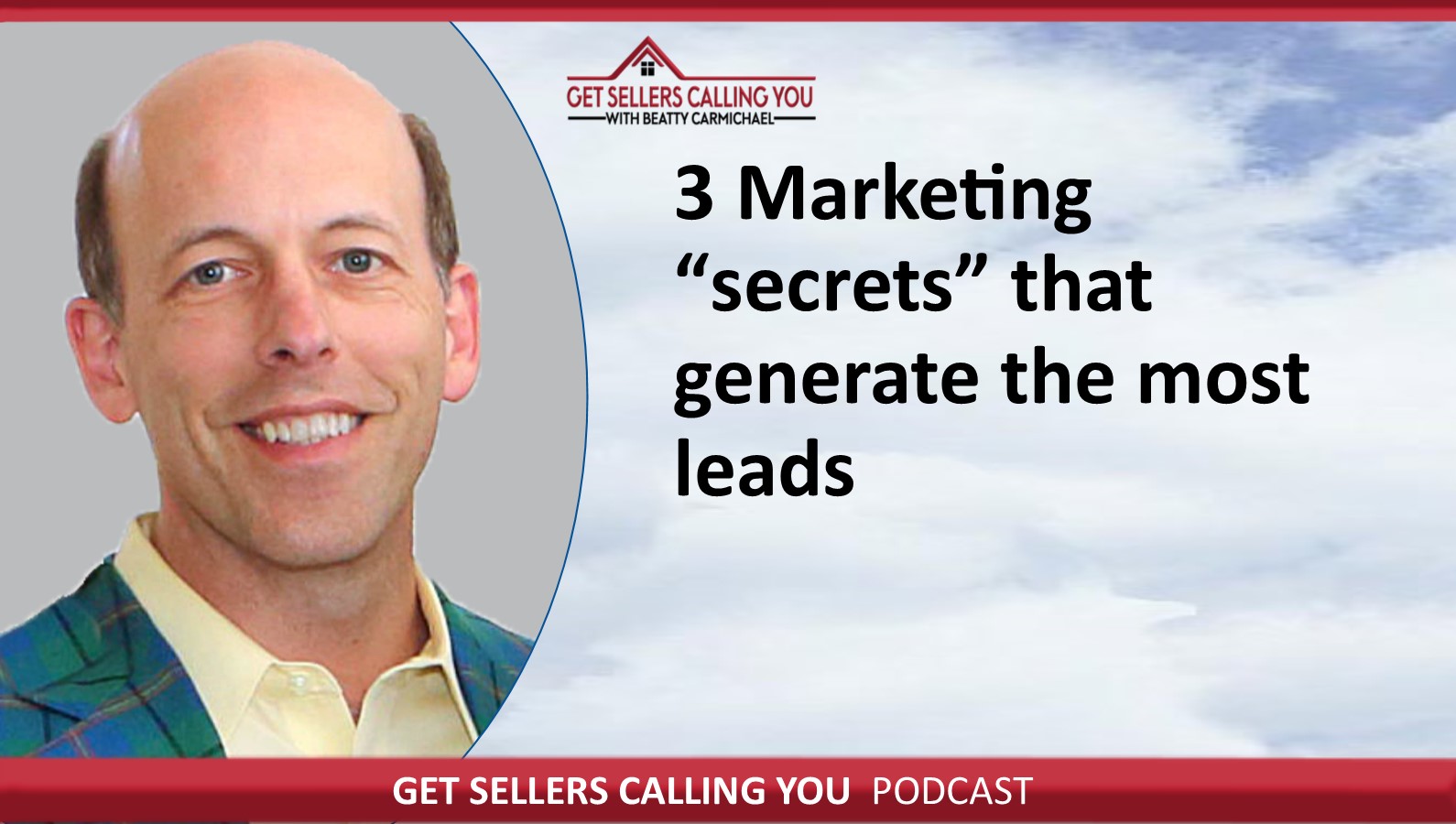

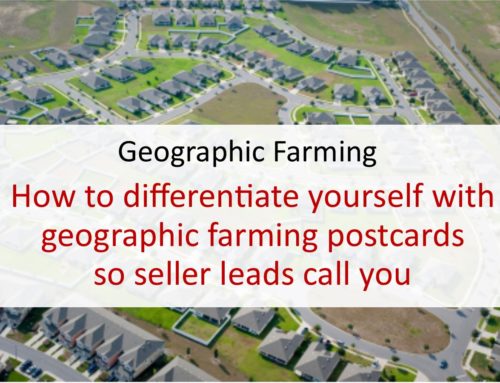
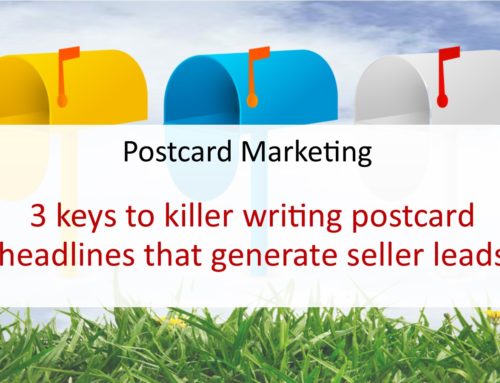
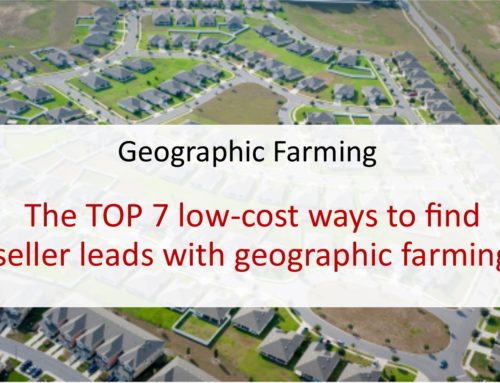
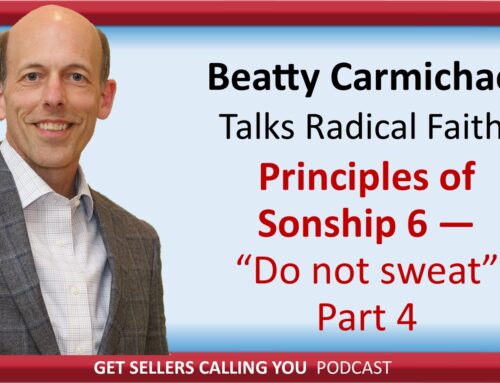

Leave A Comment